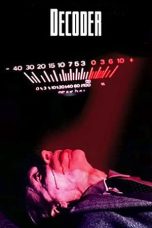- Source: Wharton Esherick Studio
Kamali from Nadukkaveri (2021)
Beauty of Beauties (1965)
Decoder (1984)
No More Posts Available.
No more pages to load.
The Wharton Esherick Studio was the studio and home of Wharton Esherick (1887-1970), an artistic polymath who is best known for his modernist sculpture and sculptural wood furniture. Built into the south slope of Valley Forge Mountain in Malvern, Pennsylvania, the Studio was a forty year project for Esherick, who constructed, expanded, and altered the building on an ongoing basis between 1926 and 1966. The Studio reflects Esherick's wide interest in twentieth-century art and design movements, from Arts and Crafts to German Expressionism to Modernist sculpture. The Studio is now preserved as part of the Wharton Esherick Museum.
There are four historic structures on the Wharton Esherick Museum site: the Wharton Esherick Studio, where Esherick lived and worked; the 1956 workshop designed with Louis Kahn and Anne Tyng; the 1928 German Expressionist log garage which now serves as the museum visitor center; and Esherick's woodshed. There is also a recent reconstruction of Esherick's 1920s German Expressionist outhouse.
The Studio, from its structural forms down to the door handles and light pulls, was designed and built by Wharton Esherick to create a total work of art, or Gesamtkunstwerk. The building is filled with more than 300 of Wharton Esherick's artworks and personal belongings, including sculpture, furniture, paintings and prints.
The Wharton Esherick Museum was incorporated as a non-profit corporation in 1971, it opened for visitors in 1972, and in 1973 was listed on the National Register of Historic Places.
The studio was declared a National Historic Landmark in 1993.
The Diamond Rock Schoolhouse, which served as Esherick's painting studio during the 1920s, was acquired by the Wharton Esherick Museum in 2019.
References
External links
Wharton Esherick Museum
Wharton Esherick House & Studio, 1520 Horseshoe Trail, Malvern, Chester County, PA: 15 photos, 2 color transparencies, 6 data pages, and 2 photo caption pages at Historic American Buildings Survey






